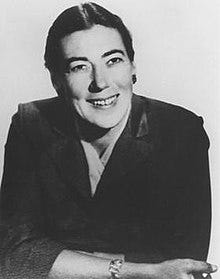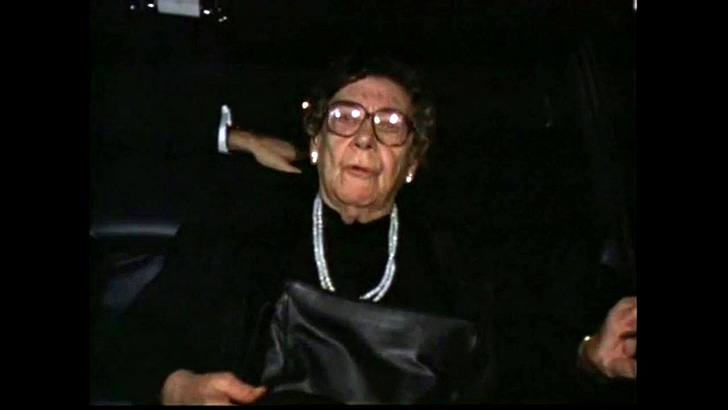Meet Dr. Evelyn Hooker, the psychologist who proved that queer people are sane
apropos of nothing ;;;
For much of the 20th century, being gay (or queer of any identity) was considered a diagnosable psychopathology. Through formal psychological diagnosis, gay people could be incarcerated by the medical system to be “cured” of the alleged disease. These treatments were brutal — ranging from electroshock therapy to a frontal lobotomy.
Though psychology no longer views queerness as a pathology, this ideology has trickled down into the public discourse. Indeed, it forms the basis for the practice of conversion therapy. President Trump has been casting trans people as delusional, and Meta amended its content moderation policy to explicitly allow the hysteria to spread even further.
But, we’ve known for nearly 70 years that these reactionaries are wrong. Queerness is not a pathology. It can not be cured, only suppressed (inflicting great harm). The suppression of queerness is not healing. Instead, it inflicts psychological pain. These truths were verified in 1956 by Dr. Evelyn Hooker, a psychology professor at the University of California, Los Angeles (UCLA).

Evelyn Hooker was born in 1907 in Nebraska. At the time, it was rare for women to pursue higher education, but Hooker did so under the encouragement of her mother who assured her that education is one thing that could not be taken from her. As such, Hooker earned her Ph.D. in Psychology in 1932 from Johns Hopkins University as one of only 11 women in her department’s Ph.D. program. This feat is made even more impressive given that her thesis advisor, Knight Dunlap, “did not approve of women doctorates generally.”
In 1937, Dr. Hooker received a fellowship to pursue psychology research in Berlin where she witnessed the horrors of Nazi fascism. During her year in Germany, she lived with a Jewish family and bore first-hand witness to state sanctioned anti-Semitic violence. This short experience ignited a passion in the young psychologist to “make her life count in helping to correct social injustice.”
She found an outlet for this mission upon returning to the United States and becoming a research associate at UCLA. While she was qualified for a professorship, the department chair (none other than her Johns Hopkins mentor Dunlap) did not want to hire her as faculty because the three female faculty already in the department were not well liked by their male counterparts, and presumably Dunlap himself.
Ultimately, however, Hooker established herself at UCLA as a dedicated teacher. In 1944, a star student in her introductory psychology course (named Sam Fromm) approached her after class. Fromm confided in Dr. Hooker that he (and many of his friends) were gay. Over time, Hooker and Fromm forged a friendship, and Hooker became ingratiated in underground gay circles in Los Angeles. She frequented gay bars with Fromm and his friends, becoming an ally1 to the community.
Initially, Dr. Hooker had no interest in turning gay men into psychological subjects, but Fromm urged her to study homosexuality to determine what, if anything, is psychologically deviant about people like him. Soon, she submitted a grant application to the National Institutes of Health (NIH) to fund the project. Dr. Hooker personally persuaded her grant officer that her research was worthy of funding — at the same time as lavender scare purges of queer people from the federal workforce.
Her research methods were simple: compare cohorts of gay men and straight men across three gold standard psychological tests of the day (the Thematic Apperception Test or TAT, the Make-a-Picture-Story test or MAPS test, and the Rorschach inkblot test). Further, she recruited three expert analysts to individually review anonymized results and attempt to distinguish gay subjects from straight subjects. All three experts failed to accurately determine the sexuality of subjects, and the aggregated data agreed that there were no differences in psychology between gay and straights subjects. Hooker published these data in 1956 in her paper “The Adjustment of the Male Overt Homosexual.”
Hooker’s results humbled the field of psychology, and in 1967 the director of the National Institute of Mental Health (NIMH) asked Hooker to lead a task force on how NIMH should approach homosexuality. However, the Nixon administration attempted to delay (read: bury) the task force’s final report once Nixon assumed office in 1969. The following year, the task force’s final report was published (without bureaucratic authorization) in a magazine. In the report, Hooker and her colleagues recommend that homosexuality be both depathologized and decriminalized while recognizing that these elite-driven actions are not sufficient for queer liberation:
To be sure, full equality in employment, full security and full acceptance by the society for homosexuals will not be achieved by changes in the law alone, but such changes may help to facilitate the recasting of public attitudes that are ultimately needed.
The gay rights movement (of mostly cis gay men and lesbians) seized upon Hooker’s research and her task force’s report as fuel for their activism. They protested meetings of the American Psychological Association (APA), the professional body that categorizes psychopathologies (including, at the time, homosexuality) in the DSM. Protesters using slogans like “Off the couches and into the streets!” while simultaneously backchanneling the APA through openly gay practitioners. Ultimately, their campaign was successful. Homosexuality was partially removed from the DSM in 1973 and fully removed 14 years later.2
Before her death in 1996, Dr. Evelyn Hooker shared her story and research in a series of interviews for the 1992 documentary “Changing Our Minds: The Story of Dr. Evelyn Hooker.” The documentary received critical acclaim after its premier at the Frameline Film Festival in San Francisco, including a nomination for the Best Documentary Feature Film at the 65th Academy Awards.
Dr. Evelyn Hooker stands out as model for critically thinking scientists to learn from the people involved in studies rather than to merely learn about them. In the documentary, she candidly reflects on her life and work. In the clip below, she shares what she learned from studying the psychology of gay men:
Doctors aren't trained in queer health. But you can help!
If you are a queer person, you probably have had at least one bad experience with the medical system. Maybe a doctor asked you invasive questions about your sexuality or sexual practices. Or, they misgendered you (even after you shared your pronouns). Perhaps they didn’t know what you were talking about when you asked a…
Hooker identified as straight. In 1958, she married Edward Hooker, a poetry scholar at UCLA.
From 1973-1987, “ego-dystonic homosexuality,” or same-sex attraction that ran contrary to an individual’s desired sexuality, remained in the DSM. This pseudo-diagnosis retains conversion therapy as a treatment option.






this was so beautiful! <3
This was a good piece that taught me something. Thanks.